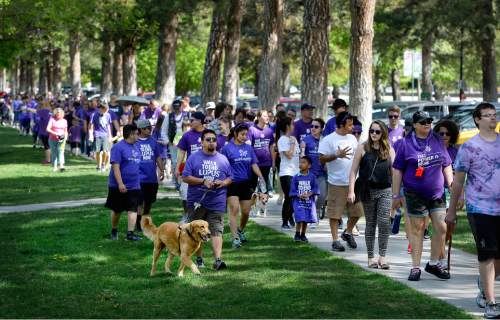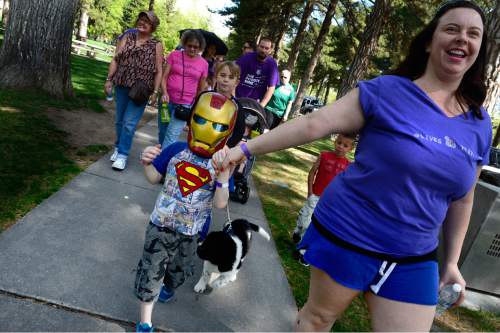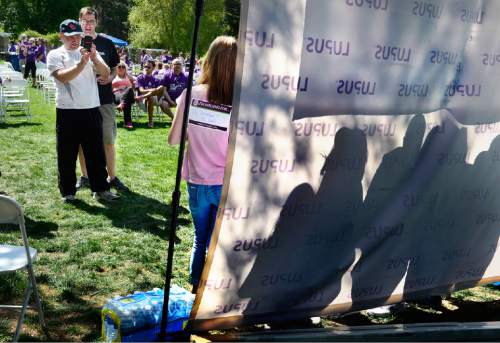This is an archived article that was published on sltrib.com in 2015, and information in the article may be outdated. It is provided only for personal research purposes and may not be reprinted.
Advocates call it a "cruel mystery," an auto-immune disorder that afflicts more Americans than multiple sclerosis, leukemia, cystic fibrosis and sickle cell anemia combined. Yet surveys indicate 72 percent of the nation doesn't knows about lupus, a disease where the immune system mistakenly attacks healthy tissue and leaves patients with debilitating symptoms.
"Lupus is invisible. You are not in a wheelchair. You look normal. People get judgmental. My body is attacking itself and there's nothing I can to do to stop it," Kristen Vander Velden of West Jordan, who helped lead the Walk to End Lupus Now at Salt Lake City's Liberty Park on Saturday.
A few hundreds "lupies," as patients playfully call themselves, and their supporters attired in purple gathered to share their challenges and hopes. And also remember Emily Braithwaite and other Utahns who have succumbed this year to complications associated with the disease formally known as systemic lupus erythematosus. A cheerleading coach from Manti, Braithwaite, 34, died April 15 after a 13-year struggle with lupus.
"There are so many people out there not talking about it. Seeing this is all worth it," said Noelle Reymond, the Utah chapter's executive director.
The Lupus Foundation of America stages the event every year to raise awareness about the disease and advocate for research that could lead to cures for a disease that afflicts 1.5 million. Some 16,000 new cases are identified each year, mostly among young women.
"Lupus is a confusing disease. On average a person experiences symptoms for six years before lupus is found to be the cause, and two out of three lupus patients had been given a previous diagnosis that was incorrect," said Reymond. "In the meantime we are not treating it and it's getting worse and it could attack organs or we could be treating for the wrong illness."
Reymond herself was diagnosed with lupus after multiple-organ failure 11 years ago.
"Just about everything shut down. I was in a coma for 11 days," she said. Reymond spent two months in the hospital recovering from that "flare" and had to learn how to walk again.
Just 26 years old, she had to give up career as a midwife. That acute episode led eventually to a diagnosis of lupus. Though frightening, it came as a relief.
"Knowledge is always power. When you find out what's wrong, you can take action, find people to support you," Reymond said.
Olivia Lee was constantly sick when she was in second grade and missed a lot of school. She was only 7 when she was diagnosed, but that led to medical attention that stabilized her condition.
"There are a lot of doctor appointments, tons of bills and medications and trips to the hospital. I have to limit myself," said Lee, a Highland High sophomore who hopes to move to Oregon and become an author.
According to Reymond, only one drug has been developed to specifically treat lupus. Patients are sometimes given anti-malarials and other drugs that quiet the immune system. But that leads to frequent colds and troubles with eyesight, Vander Velden said.
Acute episodes, called flares, are triggered by any number of things, including stress, environmental pollution, even sunlight.
"It is so unpredictable. That's what makes it so frustrating," she said.
From Tabitha Thompson's appearance Saturday, few would guess episodes of arthritis can turn a fine day for her into a painful ordeal.
"That's the thing. You don't look sick," the Sandy resident said.
Her 9-year-old daughter Zyra Mango described how Thompson's condition complicates every life and events, like going to parties.
"You have to help her when something goes wrong," Zyra said. "I hope they'll find a a cure and end lupus, which is what this walk is about."









